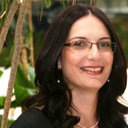Cannabis and Alcohol Abuse Among First Psychotic Episode Inpatients.
关键词
抽象
BACKGROUND
Psychoactive substance abuse, which includes abuse of alcohol and street drugs, is common among first-episode psychosis patients, but the prevalence of cannabis abuse is particularly high. However, there have been very few reported studies concerning the occurrence of psychoactive substance abuse among first-episode psychotic individuals using standard toxicological testing. We study the prevalence of cannabis and alcohol abuse among first-psychoticepisode inpatients as well as compare the demographic, diagnostic, and psychopathological profiles of substance abusers versus nonusers.
METHODS
Subjects were recruited from the Jerusalem Mental Health Center between 2012 and 2014. Ninety-one consecutively admitted psychiatric patients diagnosed using the DSM-IV criteria with a first psychotic episode due to schizophrenia, schizophreniform disorder, bipolar disorder, brief psychotic episode, and psychosis NOS disorder entered the study. The diagnoses of schizophrenia (all types), psychosis NOS disorder, brief psychotic episode, and schizophreniform disorder were categorized as "only psychosis" and those of bipolar disorder manic episode with psychotic features (congruent and incongruent) and severe depression with psychotic features were categorized as "predominantly affective symptoms." Urine tests for tetrahydrocannabinol (THC) were performed during the first 48 hours of admission, and likewise self-report questionnaires were administered. Alcohol abuse and dependence were diagnosed by self-report.
RESULTS
Of the 91 subjects in the study, 49 (53.8%) did not abuse any illegal psychoactive substance. Twenty patients (22%) abused only cannabis; 14 (15.4%) abused cannabis and another psychoactive substance; 54 (59.3%) of the subjects reported no alcohol abuse; 33 (36.3%) reported occasional drinking (between two and ten times a month); and 4 (4.4%) reported continuous repeated drinking (more than ten times a month). There was no correlation between the demographic characteristics and the abuse of cannabis. Two-thirds of the "predominantly affective symptoms" subjects were positive for THC, whereas only a third of the "only psychosis" subjects screened positive for THC.
CONCLUSIONS
The percentage of cannabis and alcohol abuse in the study population is much higher than one would expect to see in the general Israeli population (according to the Knesset Research Department 7.6-10.2% of the adult Israeli population abuse cannabis). Different patterns of cannabis abuse among "predominantly affective" and "psychotic only" patients may lend credence to the preferential use of a specific substance per diagnosis.


